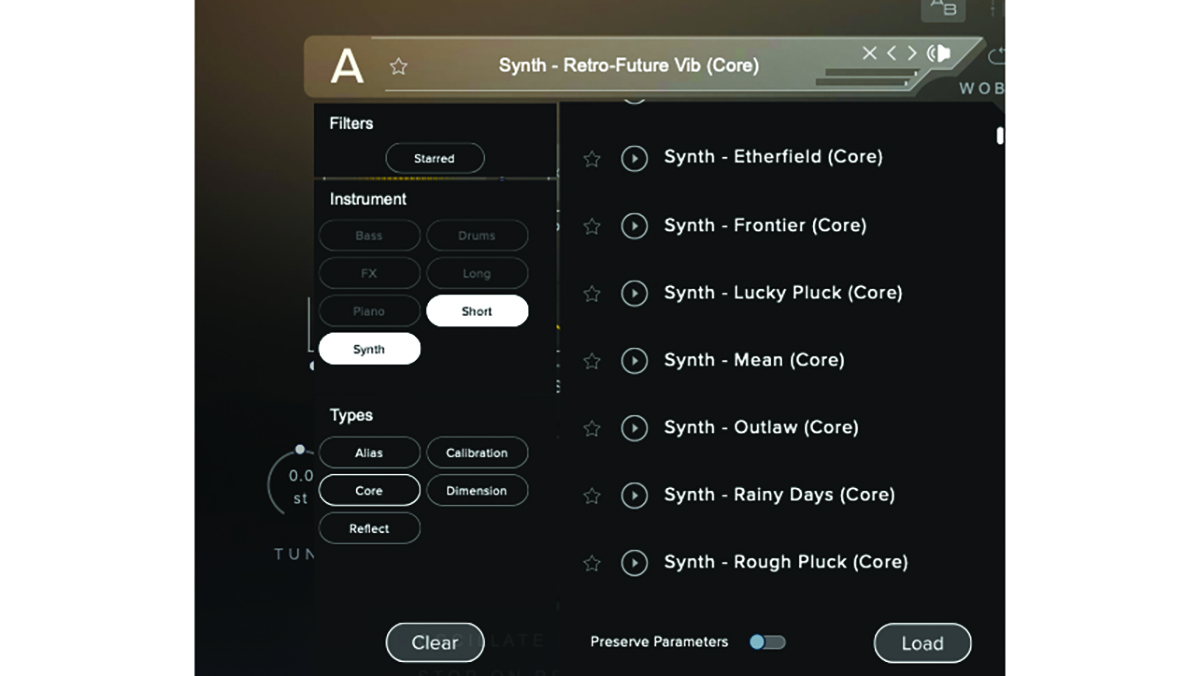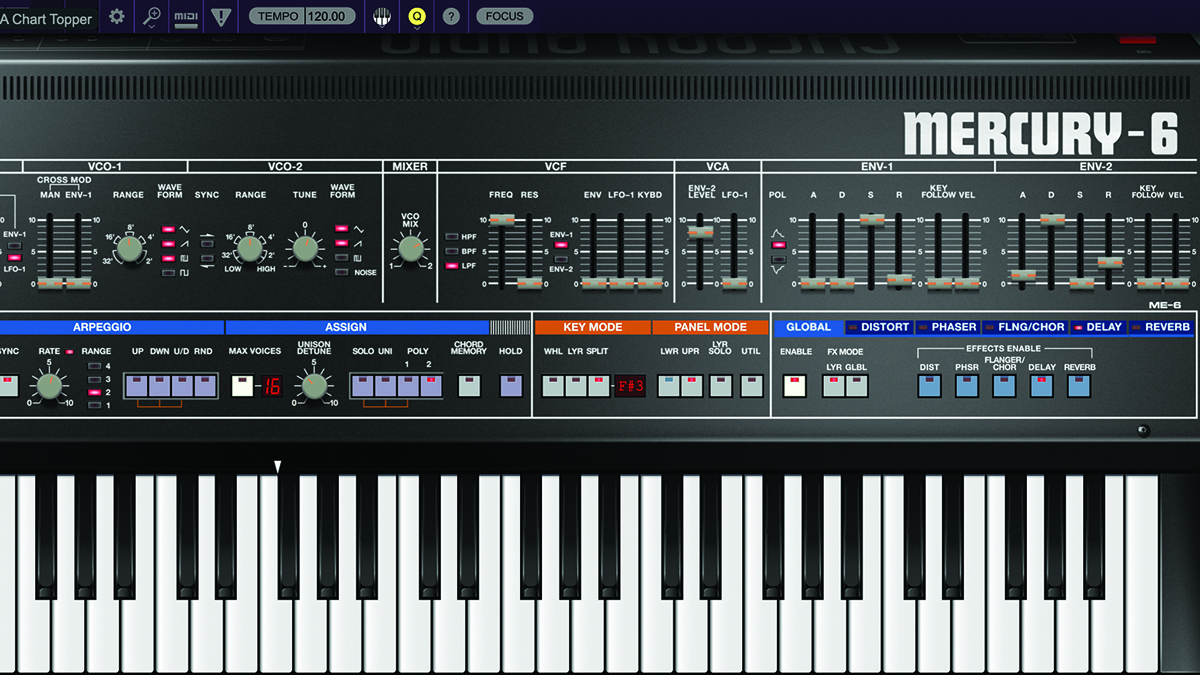MusicRadar Verdict
Jupiter is a sonically rewarding package containing some recognisable and creative sounds, but its integration within Solar does create challenges.
Pros
- +
Excellent collection of samples.
- +
The content extends considerably beyond the predictable ’80s palette.
Cons
- -
No patch categorisation.
- -
Lack of a pure Bosendorfer patch.
- -
Glitches in the Solar GUI.
MusicRadar's got your back
Spitfire Audio Jupiter: What is it?
Whether you were around in the ’80s, or you’ve subsequently heard the era’s influence on recent musical output, you’ll likely know that Trevor Horn is revered as the mastermind behind many of the iconic sounds of the decade.
Known for pushing the boundaries of music technology, while also combining terrific instrumental performances, he is the producer behind a string of acclaimed singles and albums, from artists as diverse as Grace Jones, Yes, ABC, Seal and Frankie Goes To Hollywood. He was also the main-man of the Buggles, whose 1979 single Video Killed the Radio Star remains a retro-playlist fave.
Spitfire Audio’s desire to capture some of Horn’s trademark sounds is unsurprising… a legendary British producer and a successful sampling house teaming up to create a library of era-defining sounds. But does it have a place within the current production psyche?

Spitfire Audio Jupiter: Performance and verdict
The library is titled Jupiter, presumably with reference to the classic Roland product line, most notably the Jupiter 8, which certainly played no small part in Horn’s productions.

• Cherry Audio Mercury 6
If you like the sound of ’80s synths, this reincarnation of the Jupiter 6 is an excellent plugin, at a great price.
• Roland Jupiter 8 plugin
The seminal classic available in an astonishing software recreation, from the people that invented it.
This suite operates from within Spitfire’s own Solar plugin, although it’s important to stress that Solar itself is not generating the sound. This is a sample-derived package, with Solar acting as a ROMpler, with re-synthesising tendencies. The architecture allows for two samples (A & B) to be loaded, before modulation, filtering and processing is applied.
The Synth samples occupy the greatest amount of the 45.59GB content, with patches curated by both Trevor and the Spitfire team. The sample sources are ambiguous to say the least, with no mention of the synths themselves, but the trademarks are all there, from conservative pads to earth-shattering basses, with bright, perky washes, to staccatos.
Scrolling through patches can feel a little arduous, as the curation is such that it’s not the easiest suite to navigate; patches are categorised by the wording Long or Short, rather than the instruments or styles of patch themselves. This is made worse by a graphics glitch that we continually encountered, which resulted in patch names not being visible upon a return to the patch menu, forcing a scroll back to the top to reveal the patch names. Annoying if you were nearing the bottom of the patch list.
Want all the hottest music and gear news, reviews, deals, features and more, direct to your inbox? Sign up here.
Trevor’s tools
Alongside the synth content, there are several bass samples, drawn from Trevor’s own bass collection; apart from being an ace producer, Trevor is a pretty mean bass player, having been professional in his earlier career. However, locating these can also be tricky, so we found ourselves creating our own user patches to aid workflow.
One of the jewels within the library, is a sampled Bosendorfer Grand Piano. The unmistakable brightness, coupled with the stunning sonority and depth of the lower registers makes us wish that this was more of a package feature. We were forced to create our own Bosendorfer patch, as all of the piano patches that we managed to locate seemed to exhibit processing facets that we didn’t always want to hear.
It’s a similar story with the drum machine samples, which tend to combine heavy processing on one sample channel, with lesser processed sounds on the other. Arguably, the whole point of Jupiter is to take the source material and carve it into something that suits your own requirements, but the Solar interface can make heavy work of this.

Gating and FX
As Jupiter operates within Solar, quite a number of additional features are provided, as part of Jupiter’s makeup, as well as overall generic effects. One of the most useful and significant is the Gating page which allows the easy application of a gating effect to any generic synth pad. There is also scope within this page to soften the front and backend of the gate, although the clocking of the gate didn’t always feel as secure as we might experience with a third-party gating plugin, applied from within the DAW.
There are a considerable number of more generic effects, such as reverb, tape delay and numerous levels of distortion and saturation. These are applied globally, or as auxiliaries, and we visited this page frequently to limit the amount of effect exposure within certain patches. There are also plenty of ‘Warped’ patches, where the effect section earns its salt in spades!
Welcome to the Jupiter
Coming back to our original question – does Jupiter have a place within the current production psyche? The straight answer is yes, as it sounds unquestionably superb, but there are caveats. This package will delight any fan of Trevor’s catalogue, or the ’80s era in general, and there are many patches that shine straight away. There is also modulation and expression control, which is helpful for using in more musical settings, but Spitfire has a few things to iron out to make this a package that invites more than it infuriates.
MusicRadar verdict: Jupiter is a sonically rewarding package containing some recognisable and creative sounds, but its integration within Solar does create challenges.
Spitfire Audio Jupiter: The web says
"Horn’s flair for synth-pop production comes through and, suitably, this library will have just as much use in the hands of songwriters and producers as it will with composers looking to make those retro, synth-wave scores that are still so en vogue."
MusicTech
Spitfire Audio Jupiter: Hands-on demos
Spitfire Audio
Sample Library Review
The Sampleist
Implied Music
Spitfire Audio Jupiter: Specifications
- Mac OS X 10.13 to OS13. Minimum: 2.8GHz i5 (quad-core), 8GB RAM. Recommended: 2.8GHz i7 (six-core), 16GB RAM. Intel and M1 Macs supported. 64-bit DAW required (32-bit DAWs not supported).
- Windows 10 and Windows 11 (latest Service Pack, 64-bit). Minimum: Intel Core 2.8GHz i5 (quad-core) or AMD Ryzen 5, 8GB RAM. Recommended: Intel 2.8GHzi7 (six-core) or AMD R7 2700, 16GB RAM. 64-bit DAW required (32-bit DAWs not supported).
- Download size: 45.59GB.
- CONTACT: Spitfire Audio
Roland Schmidt is a professional programmer, sound designer and producer, who has worked in collaboration with a number of successful production teams over the last 25 years. He can also be found delivering regular and key-note lectures on the use of hardware/software synthesisers and production, at various higher educational institutions throughout the UK

